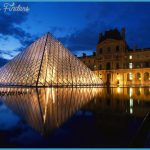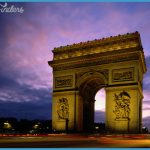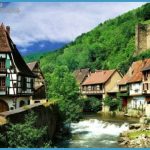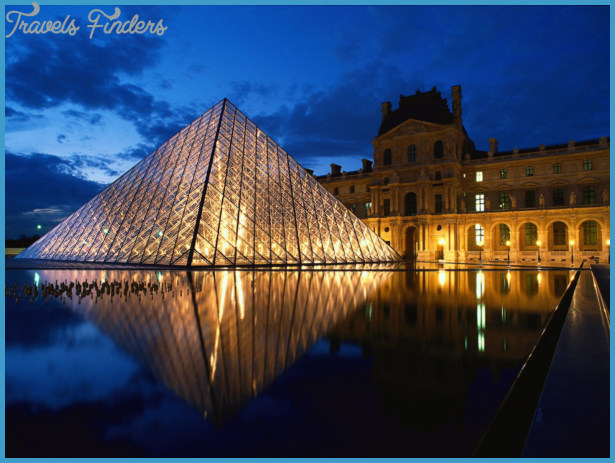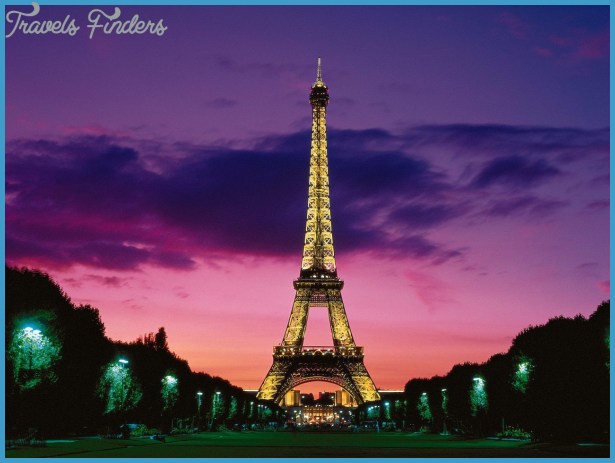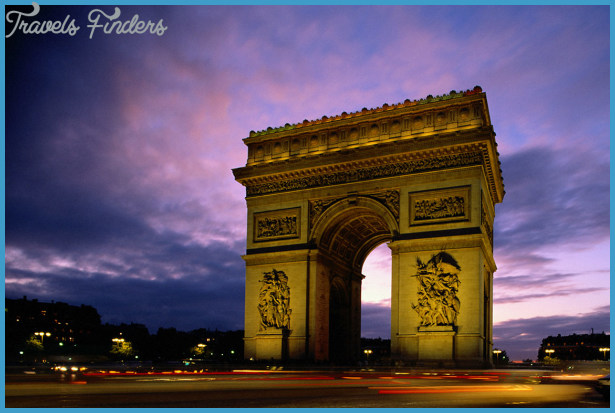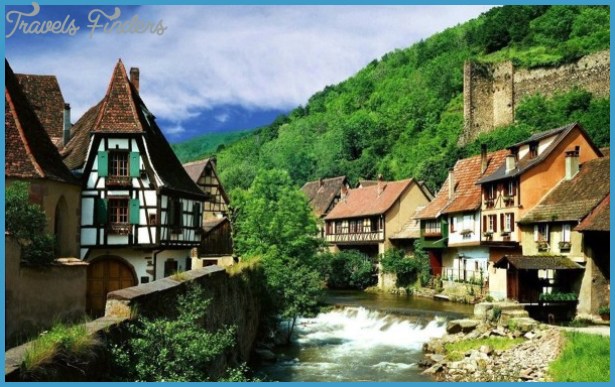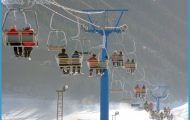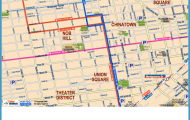Visit to France
BOULEVARD DE MONTPARNASSE. In the early 20th century, Montparnasse became a center for avant-garde artists such as Modigliani and Chagall. Political exiles like Lenin and Trotsky talked strategy over cognac in the cafes, including Le Dome, Le Select, and La Coupole, along bd. Montparnasse. After WWI, Montparnasse attracted American expatriates and artistic rebels like Calder, Hemingway, and Henry Miller. (M:Montparnasse-Bienvenue).
THE CATACOMBS. A series of tunnels 20m below ground and 1.7km in length, the Catacombs were originally excavated to provide stone for building the city. By the 1770s, much of the Left Bank was in danger of caving in and digging promptly stopped. The former quarry was then used as a mass grave, relieving Paris’s foul and overcrowded cemeteries. During WWII, the Resistance set up headquarters among the departed. (M: Denfert-Rochereau. 1 pi. Denfert-Rochereau. 01 43 22 47 63. From) the Metro, take exit pi. Denfert-Rochereau and cross av. du General Leclerc; the entrance is the dark green s tmcture straightahead. Open Tu llam-4pm, IV-Sa 9am-4pm. 5, seniors 3.30, ages 14-26 2.50. Under-14 free. Tour lasts 45min.)
LE PARC ANDRE CITROEN. The futuristic Parc Andre Citroen was created by landscapers Alain Provost and Gilles Clement in the 1970s. Rides in the hot-air balloon that launches from the central garden offer spectacular aerial views of the park and all of Paris. (2 r. de la Montagne de la Fage. sOl 44 26 20 00; www.volenbal-lon.com. M: Javel-Andre Citroen or Baiard. Open M-F 7:30am-9:30pm, Sa-Su 9am-9:30pm. Balloon rides 12, ages 12-17 10, ages 3-11 6. Under-3 free. Tours of the park in English June-Sept. Sa 10:30am; calls 01 40 71 75 60 for more info. 5.80.)
LOUVRE AND TU I LERI ES. World-famous art museum and former residence of kings, the Louvre (319) occupies about one-seventh of the ler arrondissement. Le Jardin des Tuileries, at the western foot of the Louvre, was commissioned by Catherine de Medicis in 1564 and improved by Andre Le Notre (designer of the gardens at Versailles) in 1649. (M: Tuileries. sOl 40 20 90 43. Open daily Apr.-Sept 7am-9pm; Oct.-Mar. 7:30am-7:30pm. Tours in English from the Arc de Triomphe du Carrousel.) Three blocks north along r. de Castiglione, place Vendome hides 20th-century offices and luxury shops behind 17th-century facades. Look out for Napoleon on top of the column in the center of the place he’s the one in the toga. (M: Tuileries or Concorde.)
PALAIS-ROYAL. One block north of the Louvre along r. St-Honore lies the once regal and racy Palais-Royal, constructed in the 17th century as Cardinal Richelieu’s Palais Cardinal. After the Cardinal’s death in 1642, Queen Anne d’Autriche moved in, bringing with her a young Louis XIV. In the central courtyard, the controversial colonnes de Buren, a set of black-and-white striped pillars, were installed by artist Daniel Buren in 1986. (Fountain open June-Aug. daily 7am-llpm; Sept. 7am-9:30pm; 0ct.-Mar. 7am-8:30pm; Apr.-May 7am-10:15pm. Free.)
LES HALLES. A sprawling market since 1135, Les Hailes received a much-needed face-lift in the 1850s with the construction of large iron-and-glass pavilions to shelter the vendors’s stalls. In 1970, when authorities moved the old market to a suburb, planners destroyed the pavilions to build a subterranean transfer-point between the Metro and the new commuter rail and a subterranean shopping mall, the Forum des Hailes, with over 200 boutiques and three movie theaters. (M: Les Hailes).
OPERA. Located north of the Louvre in the 9eme arrondissement, Charles Gam-ier’s grandiose Opera Gamier was built under Napoleon III in the eclectic style of the Second Empire. Gobelin tapestries, gilded mosaics, a 1964 Marc Chagall ceiling, and a six-ton chandelier adorn the magnificent interior. (M: Opera. General info s08 36 69 78 68, tours 01 40 01 22 63; www.opera-de-paris.fr. Concert hall and museum open Sept. to mid-July daily 10am-5pm, last entry 4:30pm; mid-July to Aug. 10am-6pm, last entry 5:30pm. Concert hall closed during rehearsals; call ahead. Admission 6; ages 10-16, students, and over 60 3. English tours daily at noon and 2pm. 10; students 8.)
PIGALLE. Farther north, at the border of the 18eme, is the infamous area named Pigalle. Stretching along the trash-covered bd. de Clichy from pi. Pigalle to pi. Blanche is a salacious, voracious, and generally pretty naughty neighborhood, the home of famous cabarets-CMm-nightdubs like Folies Bergere, Moulin Rouge, and Folies Pigalle. The areas to the north of bd. de Clichy and south of pi. Blanche are comparatively calmer, but visitors should exercise caution at all times. (M: Pigalle.)
RUE DES ROSIERS. Until the 13th century, Paris’s Jewish community was concentrated in front of Notre Dame. When Philippe-Auguste expelled the Jewish population from the city limits, many families moved to the Marais, just outside the walls. Since then, this quarter has been Paris’s Jewish center, with two synagogues at 25 r. des Rosiers and 10 r. Pavee, designed by Art Nouveau architect Hector Guimard. The mix of Mediterranean and Eastern European Jewish cultures gives the area a unique flavor, with kugel and falafel served side by side. Nearby, the comer of rue Vielle-de-Temple and rue St-Croix de la Brettonnerie is the epicenter of the Marais’s gay community, with tons of fun cafes and bars. (M: St-Paul. Four blocks eastofBeaubourg, parallel to r. des Francs-Bourgeois.)
MEMORIAL DU MARTYR JUIF INCONNU. The Memorial to the Unknown Jewish Martyr is the child of a 1956 committee that included de Gaulle, Churchill, and Ben-Gurion; it commemorates European Jews who died at the hands of the Nazis and their French collaborators. Usually located in the 4eme, the memorial is under renovation in 2003; the address below is temporary. (M: St-Paul. 37 r. de Turenne. sOl 42 77 44 72; fax 01 48 87 12 50. Exposition open M-Th lOam-lpm and 2-5:30pm, F lOam-lpm and 2-5pm. Archives open M-W llam-5:30pm, Th Uam-8pm.)
HOTEL DE VILLE. Paris’s grandiose city hall dominates a large square with fountains and Belle Epoque lampposts. The present edifice is a 19th-century creation built to replace the original medieval structure, a meeting hall for the cartel that controlled traffic on the Seine. (29 r. de Rivoli. M: Hotel-de-Ville. sOl 42 76 43 43. Open M-F 9am-6:30pm when there is an exhibit, until 6pm othenvise. Tours given by individual lecturers available for groups with advance reservations; the Hotel provides a list of lecturers, their dates, and phone numbers; some lecturers offer English tours.)
PLACE DES VOSGES. At the end of r. des Francs-Bourgeois sits the magnificent pi. des Vosges, Paris’s oldest public square. The place is one of Paris’s most charming spots for a picnic or an afternoon siesta. Victor Hugo lived at no. 6, which is now a museum of his life and work. (M: Chemin Vert or St-Paul.)
CANAL ST-MARTIN. Measuring 4.5km, the 1825 canal has several locks, which can be observed on a Canauxrama trip. The canal was built in 1825 as a shortcut for river traffic on the Seine (to which it no longer connects), and it also served as a defense against the upstart eastern arrondissements. This lovely residential area is being rediscovered by Parisians and tourists alike, and is a great place to wander. (M: R6pubtique or Goncourt will take you to the most beautiful end of the canal.)
THE BASTILLE PRISON. Originally commissioned by Charles V to safeguard the eastern entrance to Paris and later made into a state prison by Louis XIII, the Bastille was hardly the hell-hole the Revolutionaries who tore it down imagined. Titled inmates were allowed to furnish their suites and bring their own servants. Today, the July Column, at one comer of the pi. de la Bastille, commemorates the site where the prison once stood. Since the late 19th century, July 14 has been the official state holiday of the French Republic and is usually a time of glorious firework displays and equally glorious alcohol consumption. (M: Bastille.)

